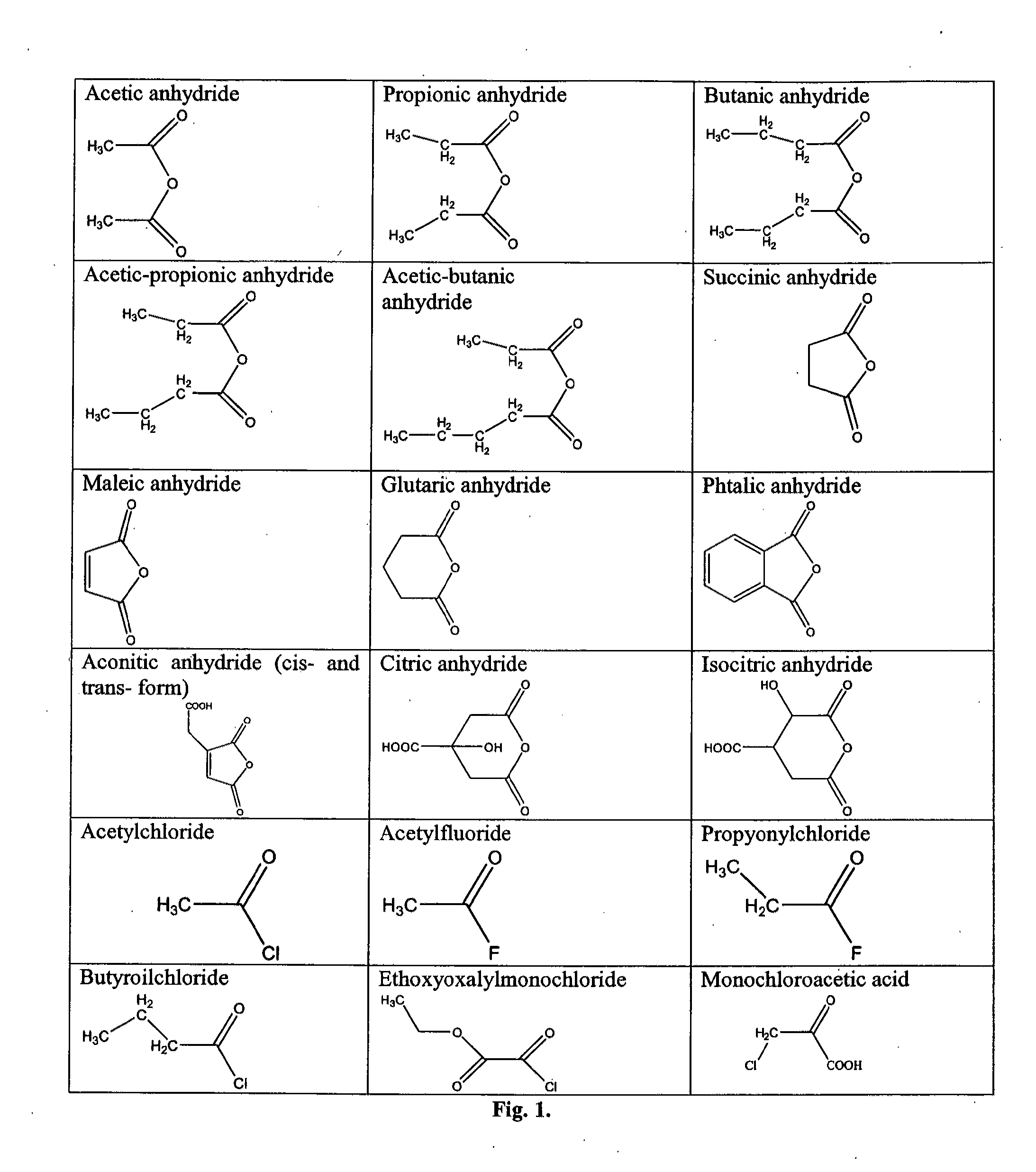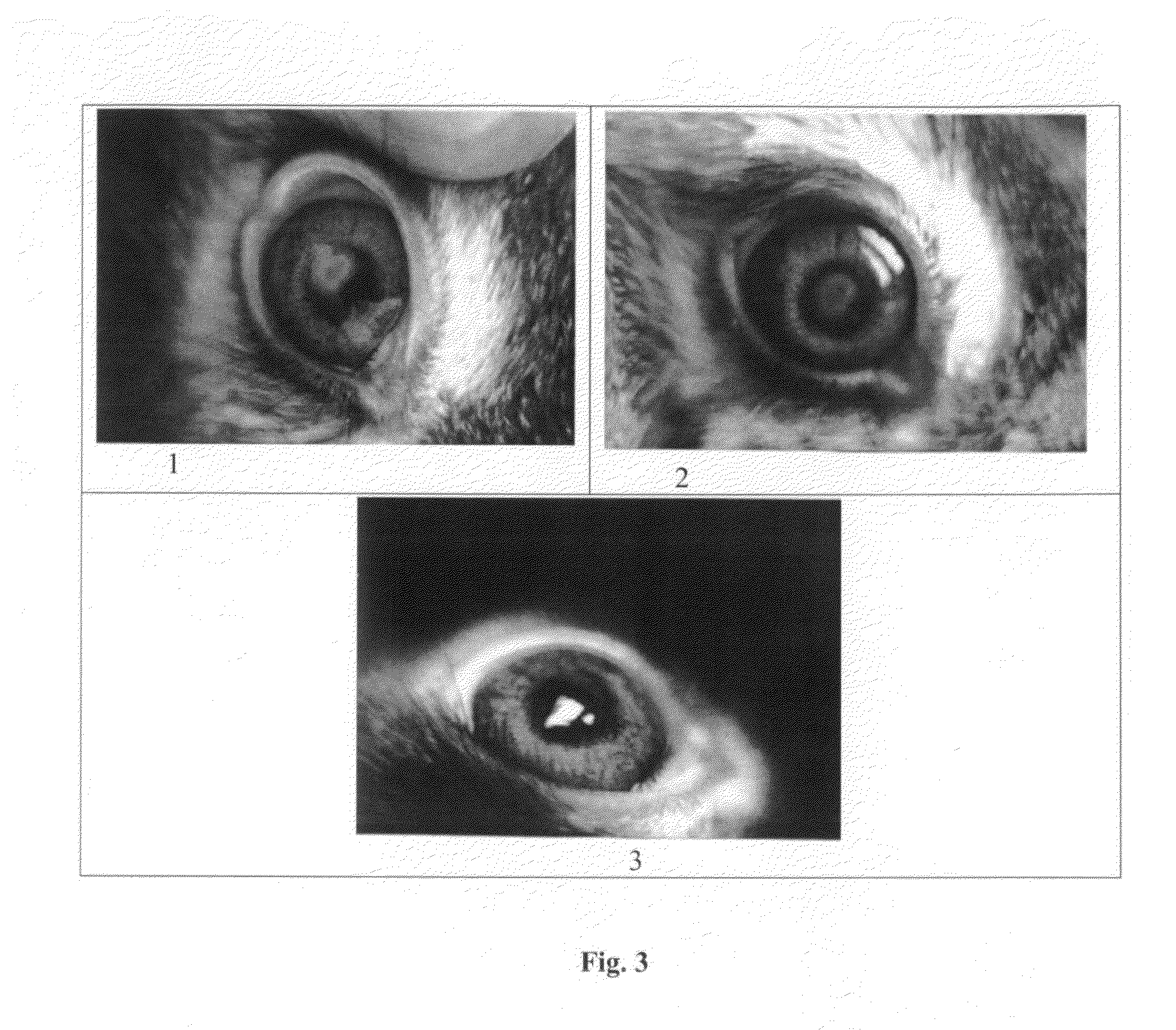Modified peptides with antiviral properties and methods for obtaining them
a technology of antiviral properties and modified peptides, applied in the field of veterinary and human medicine, can solve problems such as blocking the replication of viruses, and achieve the effect of reducing treatment times and increasing treatment effectiveness
- Summary
- Abstract
- Description
- Claims
- Application Information
AI Technical Summary
Benefits of technology
Problems solved by technology
Method used
Image
Examples
example 2
A Study of the Toxicity and Determination of the MTC of the MP Drug on Cell Cultures and Chicken Embryos
[0023]To determine the MTC, two-day cultures of cells with well-formed cell monolayers were used. The MP drug was tested five separate times on each of the four types of cells listed above. In each experiment, no fewer than 10 test tubes were used for each of the cultures. After removal of the growth medium from the test tubes, 0.2 ml of the experimental solution and 0.8 ml of support culture medium was added to each test tube. The cells were incubated at a temperature of 37° C. over 7-8 days.
[0024]Test tubes containing cell cultures to which the drug was not added served as controls.
[0025]Calculation of the result was conducted according to the presence or absence of cytopathic activity in the cell when examined under a microscope at ×10. The level of cytotoxic action was determined through changes to the morphology of the cells (cells becoming round or wrinkled, degenerating cel...
example 3
A Study of the Antiviral Activity of the MP Drug on the Influenza A Virus (H3 N2)
[0031]Water solutions of MP in various dosages (tenfold dilution) were introduced into 15 chicken embryos in the allantoic layer in a volume of 0.2 ml every 12 hours after introduction of the virus in a working dosage (100 TCD 50 / 0.2 ml).
[0032]Each experiment was accompanied by a control of the test virus in a working dosage. The infected and uninfected (control) embryos were incubated at a temperature of 36° C. over 48 hours. Then the embryos from which the allantoic fluid was removed were dissected. The titration of the virus in the allantoic fluid was conducted via the generally accepted methodology with 1% erythrocytes of human blood type 0(1).
[0033]The protection factor (PF) was determined in accordance with [1]. The titer of the virus in the experimental and control groups of chicken embryos is presented in Table 2.
TABLE 2Effective Concentration of MP inin ovo Influenza Infection ModelsMinimumViru...
example 4
Study of the Antiviral Activity of the MP Drug on Cytopathic Viruses (Vesicular Stomatitis Virus, the Coronavirus, and HSV-1)
[0035]The antiviral activity in relation to this group of viruses was determined in cultures of the abovementioned cells. The reaction was produced in the following manner 0.2 ml each of the corresponding virus in a working dosage (100 TCD50 / 0.2 ml) was introduced into a two-day rinsed cell culture. 0.8 ml of supporting medium was added. When cytopathic activity was observed in the culture, the MP drug was introduced in various doses. As a control, the same test viruses were used without the drug. The cells were incubated at a temperature of 37° C. Reports on the experiment were done on the third, fifth, and seventh days.
[0036]A decline in the virus titer under the influence of the drug being tested of 2 lg or more in comparison with the control was determined to indicate antiviral activity.
[0037]The results of the study of the antiviral activity of the MP dru...
PUM
| Property | Measurement | Unit |
|---|---|---|
| temperature | aaaaa | aaaaa |
| temperature | aaaaa | aaaaa |
| volume | aaaaa | aaaaa |
Abstract
Description
Claims
Application Information
 Login to View More
Login to View More - R&D
- Intellectual Property
- Life Sciences
- Materials
- Tech Scout
- Unparalleled Data Quality
- Higher Quality Content
- 60% Fewer Hallucinations
Browse by: Latest US Patents, China's latest patents, Technical Efficacy Thesaurus, Application Domain, Technology Topic, Popular Technical Reports.
© 2025 PatSnap. All rights reserved.Legal|Privacy policy|Modern Slavery Act Transparency Statement|Sitemap|About US| Contact US: help@patsnap.com



